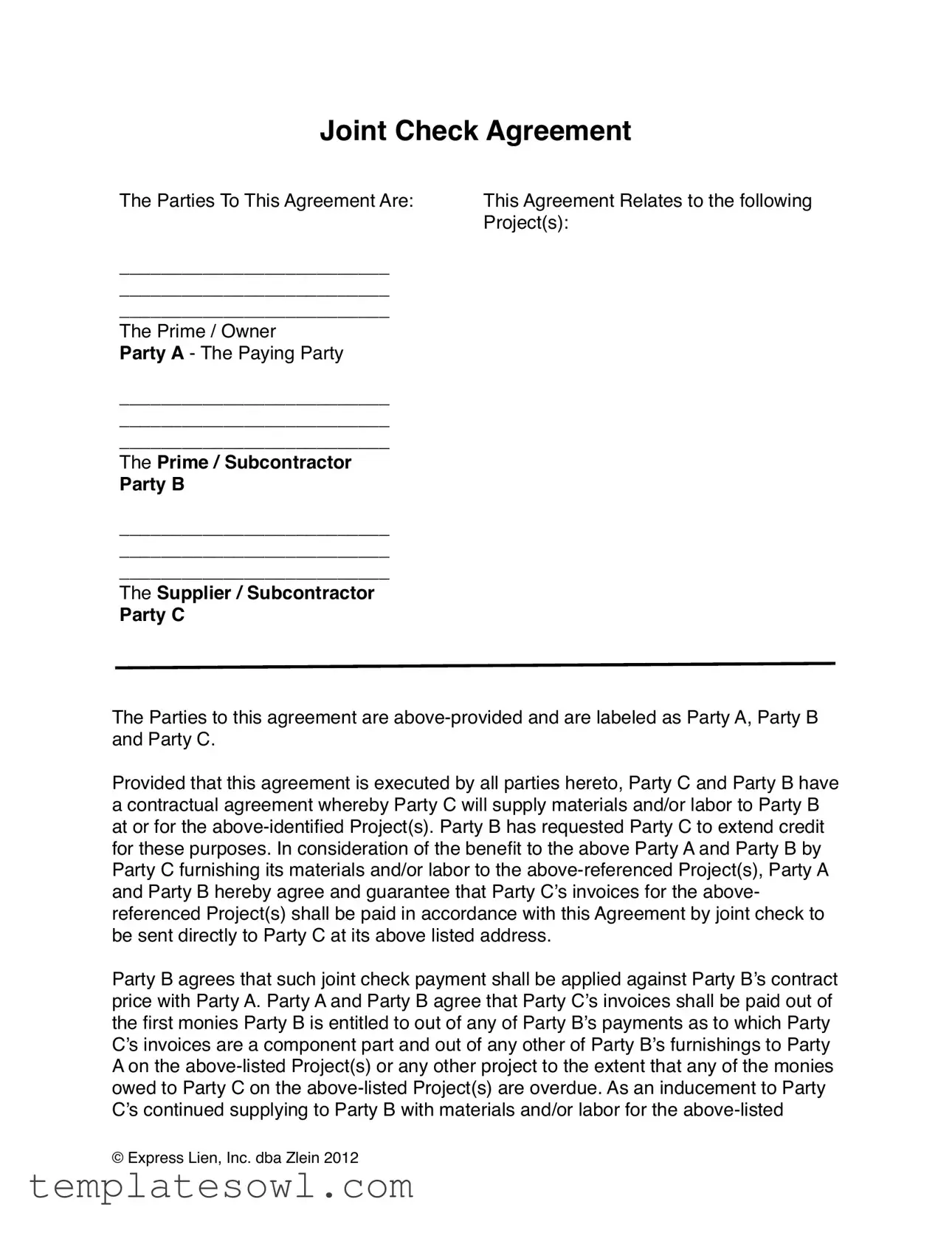What is a Joint Check Agreement?
A Joint Check Agreement is a legal document that establishes an arrangement between three parties: the paying party (Party A), the subcontractor (Party B), and the supplier (Party C). This agreement allows for payments made to Party C for materials and labor to be issued via a joint check between Party A and Party B, ensuring that Party C receives the funds directly for their contributions to a specified project.
Who are the Parties involved in a Joint Check Agreement?
In a Joint Check Agreement, there are three key parties involved. Party A is the Prime or Owner who is responsible for paying for the work being done. Party B is the Subcontractor who has contracted with Party A to perform work on a project. Party C is the Supplier or Subcontractor that provides materials or additional labor to Party B. Each party plays a distinct role in the agreement, and their cooperation is essential for payment to be processed smoothly.
How does the payment process work?
Under this agreement, Party A and Party B jointly guarantee that Party C’s invoices will be paid through a joint check process. When invoices are submitted by Party C for the work done on the identified projects, the payment will be issued in the form of a check signed jointly by Party A and Party B. This ensures that Party C is paid directly, reducing the risk of non-payment for the materials or labor provided.
What obligations do Parties A and B have regarding payment?
Party A and Party B are obligated to pay Party C's invoices out of the first funds available to Party B related to the project. If there are insufficient funds in Party B’s account to cover these invoices, Party A must inform Party C in writing within ten days. Furthermore, both parties have an affirmative duty to endorse the joint checks paid to Party C and cannot revoke this agreement without Party C's consent.
Can Party C seek additional legal rights under this Agreement?
Yes, Party C retains rights under the provisions of the Uniform Commercial Code as well as mechanics lien laws. This Agreement aims to protect Party C’s interests and does not waive any of the rights or remedies available to Party C. It is important to understand that the Joint Check Agreement is in addition to any other legal rights Party C may have regarding payment for materials or labor provided.
What happens if there is a default in payment?
In the event that Party A and Party B fail to make the payments as agreed, they jointly and severally agree to cover Party C’s reasonable attorney fees and costs incurred in enforcing the terms of the Joint Check Agreement. This provision serves as a safeguard for Party C, ensuring that they have financial recourse if payments are not made timely.
How is the Joint Check Agreement executed?
The Joint Check Agreement becomes effective once all three parties have signed it. Each party represents and binds themselves and their respective successors and assigns to the terms laid out in the agreement. The document may be executed in counterparts, meaning each party can sign separate copies, and any invalid provisions can be separated from the rest, allowing the agreement to remain intact.

